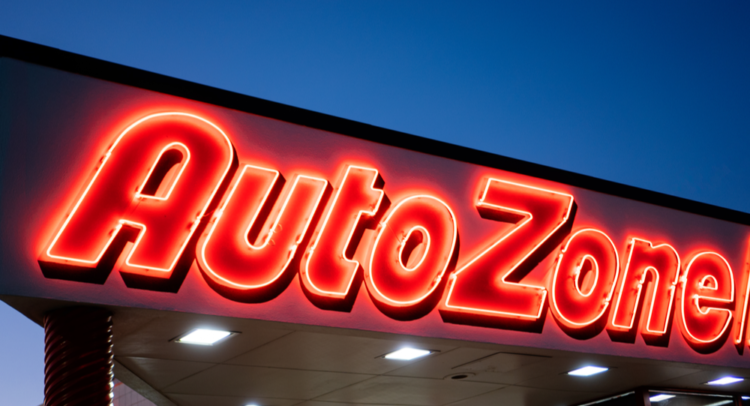Incorporated in 1979, Tennessee-based AutoZone (AZO) retails and distributes automotive replacement parts and accessories.
Although AZO is an excellent company that is very profitable and shareholder-friendly, we are neutral on the stock at its current price.
AutoZone’s Competitive Advantage
There are a couple of ways to quantify a company’s competitive advantage using only its income statement. The first method involves calculating the earnings power value (EPV).
Earnings power value is measured as adjusted EBIT after tax, divided by the company’s weighted average cost of capital, and reproduction value can be measured using total asset value. If earnings power value is higher than reproduction value, then a company is considered to have a competitive advantage.
The calculation is as follows:
EPV = EPV adjusted earnings / WACC
$38.7 billion = $3.022 billion / 0.07
Since AutoZone has a total asset value of ~$14 billion, we can say that it has a rather significant competitive advantage. In other words, assuming no growth for AutoZone, it would require $14 billion of assets to generate $38.7 billion in value over time.
The second method of determining a competitive advantage is by looking at a company’s gross margins because it represents the premium that consumers are willing to pay over the cost of a product or service.
An expanding gross margin indicates that a sustainable competitive advantage is present. If an existing company has no edge, then new entrants would gradually take away market share, leading to decreasing gross margins as pricing wars ensue to remain competitive.
For AutoZone, gross margins have remained flat in the past 10 years, hovering in a very tight range from 51.5% to 53.7% (currently 52.5%). As a result, its gross margins indicate that a competitive advantage is present in this regard as well.
Efficiency
The company’s competitive advantage has allowed it to operate very efficiently over the past decade.
To measure efficiency, we will take a look at cash return on invested capital (calculated as free cash flow divided by invested capital).
Essentially, this measures how much free cash flow the company generates for every dollar of capital it invests. In the last 12 months, AZO had a CROIC of 44.4%, which is well above the sector average of 7.3%.
This is consistent with its five-year average of 39.5%. Put simply, for every dollar AZO invested last year, it earned $0.44 in free cash flow; that is quite an amazing return.
This free cash flow can be used to return capital to shareholders through large buybacks, as AZO is known for doing.
Just recently, AZO announced an additional $2-billion buyback program, which would help boost future earnings per share numbers as the number of shares decreases.
AutoZone’s Risks
To measure AutoZone’s risk, we first check if financial leverage is an issue. We do this by comparing its total debt-to-free cash flow.
Currently, this number stands at 2.72. In addition, when looking at historical trends, AZO’s debt-to-free cash flow ratio has been trending down, as the ratio was 5.05 in August 2017, and 3.74 in August 2020.
Overall, we believe that debt is currently not a material risk for the company because its interest coverage ratio is 15.8 (calculated as EBIT divided by interest expense).
However, there are other risks associated with the company. According to Tipranks’ Risk Analysis, AutoZone disclosed 20 risks in its most recent earnings report. The highest amount of risk came from the Ability to Sell category.
Wall Street’s Take
Turning to Wall Street, AutoZone has a Moderate Buy consensus rating, based on seven Buys, four Holds, and zero Sells assigned in the past three months. The average AutoZone price target of $2,166.36 implies 8.2% upside potential.

Final Thoughts
AutoZone is a solid company that has rewarded shareholders handsomely in the past. This is no surprise since it has a measurable competitive advantage which allows it to operate much more efficiently than its sector peers. AZO stock should continue providing investors with decent returns in the long term.
Nonetheless, we remain neutral because the average price target implies only 8.2% upside potential, which does not provide us with a large enough margin of safety.
Download the TipRanks mobile app now
To find good ideas for stocks trading at attractive valuations, visit TipRanks’ Best Stocks to Buy, a newly launched tool that unites all of TipRanks’ equity insights.
Read full Disclaimer & Disclosure


















